Meet the Colony’s Caste: Fascinating Roles of Bees in a Hive

Hidden in every beehive is a highly organized society of bees with a clear hierarchy and well-defined roles. Though a thriving colony can house over 60,000 bees, every bee plays a vital part in the hive’s survival. Each hive is made up of a fascinating caste of characters, including the queen bee, the versatile female worker bees, and the often-overlooked drones. Each member has an important job to do! Understanding the roles of bees in a hive reveals just how remarkable and efficient life inside the hive truly is. As a self-proclaimed science nerd, I find bees fascinating! The more I learn about these complex social insects, the more in awe I am of these incredible creatures!
Three Main Castes
In beekeeping, a caste refers to the distinct group of bees within a colony. Each has specific roles and physical characteristics. Honey bee colonies contain a single queen bee, worker bees, and male drones.
The Queen: The Heart of the Hive
Each honeybee colony contains a single queen bee. The queen bee has the longest lifespan. Typically, a queen bee lives 2 to 3 years, but can live up to 5. She has two distinct roles within the colony: reproduction and hive regulation. The queen is the only bee capable of laying fertile eggs within the colony. While unfertilized eggs produce drones, worker bees are only produced from fertilized eggs. Egg laying is the queen’s primary duty; a healthy queen can lay over 2000 eggs in a single day!
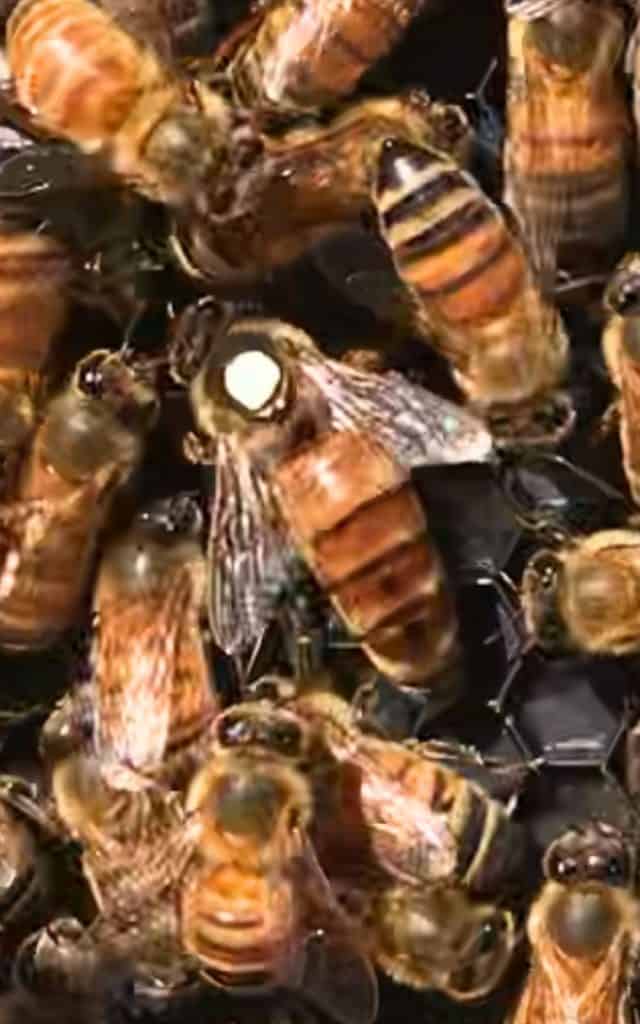
Equally important to egg laying, the queen is responsible for hive regulation. While she doesn’t “rule” in the traditional sense, the queen’s pheromones influence the behavior of the entire hive, maintaining order and harmony among these highly social insects.
Queen bees look distinctly different from other female bees; however, the distinct difference in their physiology begins in their diet. While all bees are fed royal jelly for a limited time, queen bees eat royal jelly their entire lives. As a queen ages, she begins laying fewer eggs, or possibly her pheromone levels decline, resulting in the bees not sensing her presence, the bees will replace her by creating a new queen. Even if the queen should be lost unexpectedly in tragedy, the colony can transform any viable egg or even a very young larva into a queen bee by beginning the feeding protocols of a queen bee. While every bee in the colony is important, a queen bee is vital to ensure the survival of the colony.

Get our free Beehive Inspection Checklist
When you join our newsletter
The Drones: Mating Is Their Mission
Male honey bees are called drones. They are the largest bees in the hive with large eyes. Unlike other bees, drones don’t have a stinger (making them my favorite). A drone’s sole purpose in the hive is to mate. Since drones do not contribute to the welfare of the hive at all, they tend to get a bad rap for their lack of contribution. However, their greatest contribution is to provide genetic diversity within the honeybee community.
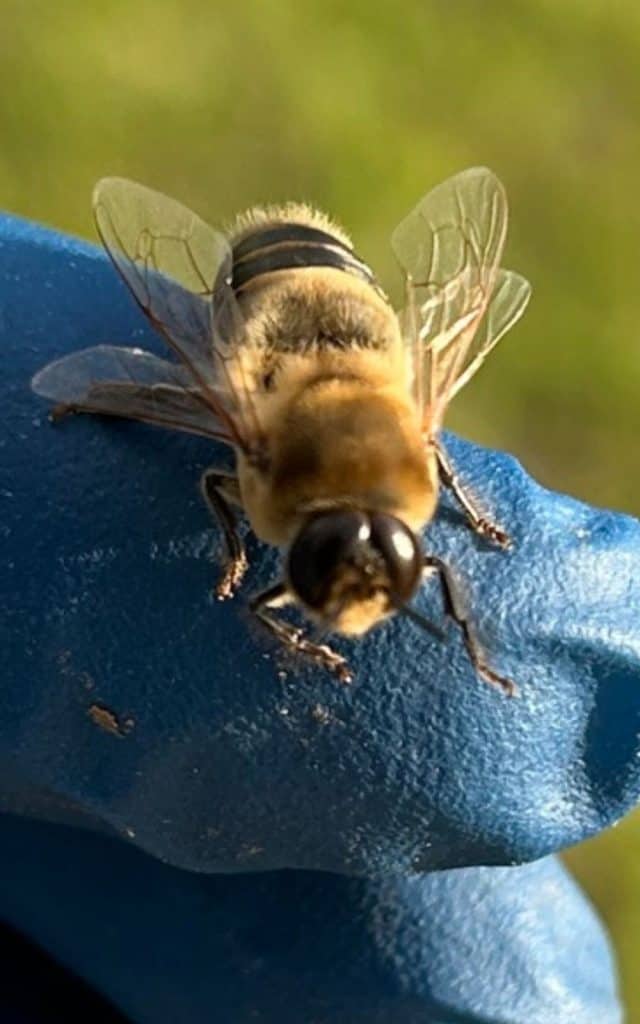
Drones only mate with queens outside of their colony. They seek drone congregation areas where thousands of drones seek the attention of virgin queen bees on their mating flights. These queens will mate with 10 to 20 drones to ensure genetic diversity within their colony, which ensures their survival. Since a queen bee takes only one mating flight in her lifetime, she needs enough sperm stored within her body to fertilize thousands of eggs.
Unfortunately for the drone, mating is its final act in life. His endophallus is ripped from his abdomen, and he will die shortly thereafter. Should a drone not mate with a queen, his fate is not secure come fall. Viewed simply as a mouth to feed, drones are evicted from the hive when food becomes scarce. He will likely freeze or starve, banished from the protection and warmth of the colony.
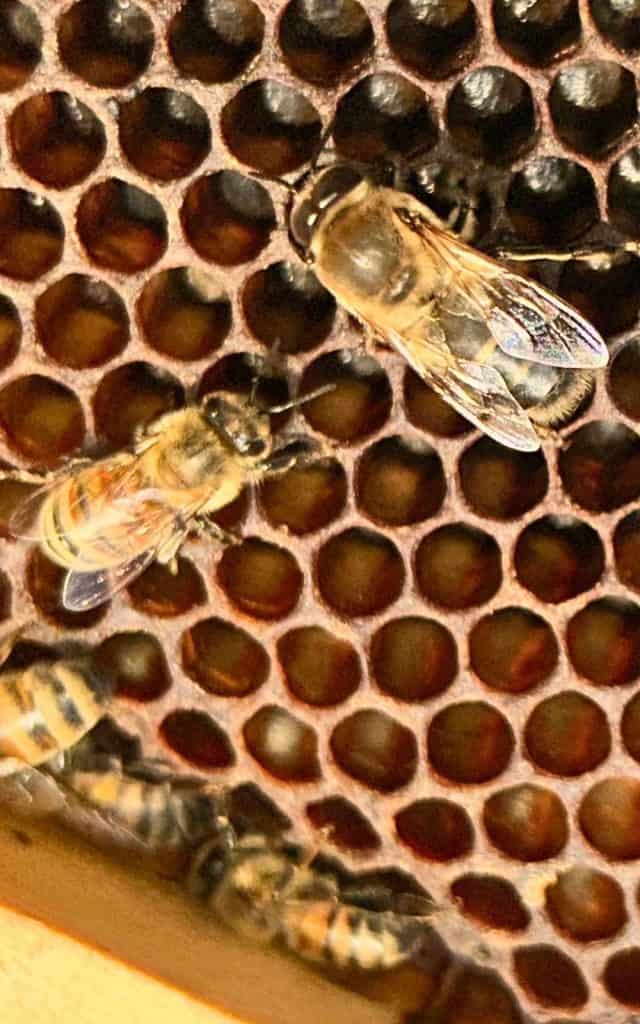
From Nurse to Forager: The Worker’s Journey
The largest population in the colony is made up of female worker bees. Worker bees only live approximately 6 weeks in the summer, which explains the number of eggs laid by the queen! It takes a lot of bees to maintain a population of 60,000 bees! Winter bees have considerably different roles and can live 6 to 8 months.
Worker bees shoulder the work of the entire hive. As worker bees age, their responsibilities shift in a natural progression known as age polyethism, ensuring the hive runs smoothly from the inside out. For the first three weeks of life, a worker bee performs tasks within the safe boundaries of the hive. As the worker bees mature, their duties shift to more dangerous ones outside of the colony.
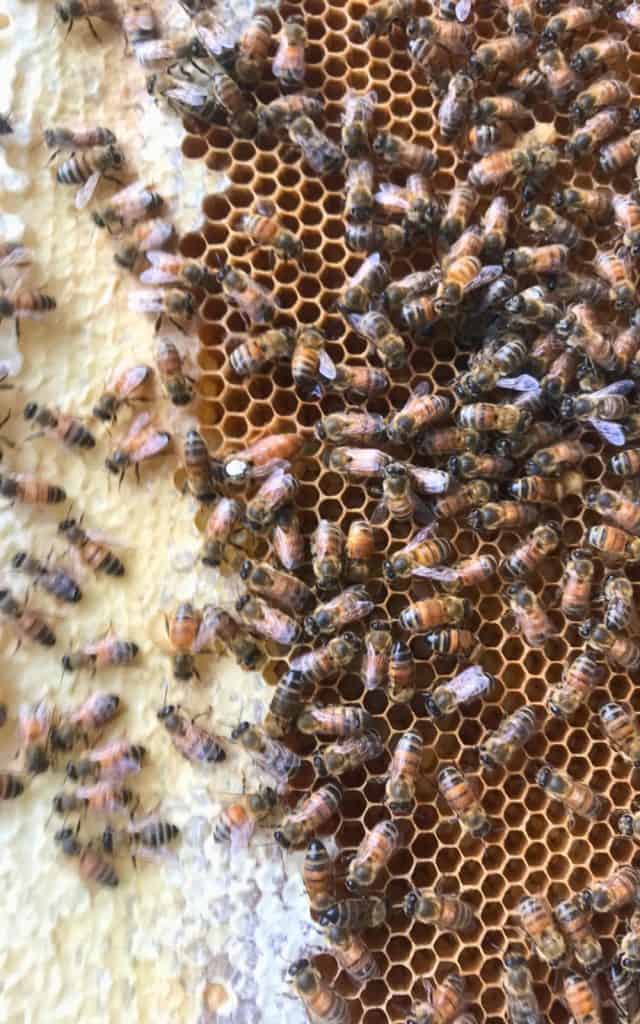
I find this fascinating! If the young, more agile bees took on more dangerous roles, leaving older bees to perform house duties, the entire system could break down. Bees are most vulnerable when they leave the safety of the nest; a huge loss of young bees could mean there were insufficient numbers to maintain the work of the house bees. The idea that the older bees take the biggest risks at the end of their lives ensures the colony can continue with the young hard at work within the safety of the hive.
Division of Duties Among Worker Bees
While there is some flexibility in the duties of bees, most bees follow this progression throughout their lives.
Housecleaning
Worker bees are impeccable housekeepers! Newly emerged worker bees begin by cleaning the honeycomb cells, starting from the cell she emerged. This prepares the honeycomb for the queen to lay new eggs within the vacated cells or provide space for food storage.
Nurse Bees
Nurse bees are approximately 3 to 12 days old. They have a hypopharyngeal gland that produces royal jelly. While queen bees eat royal jelly their entire lives, all larvae are fed royal jelly for a few days. Bees not chosen to become queens will be transitioned to a diet of honey, pollen, and bee bread. Since the queen can lay 1500 to 2000 eggs a day, thousands of nurse bees in the colony are needed to tend to the larvae.
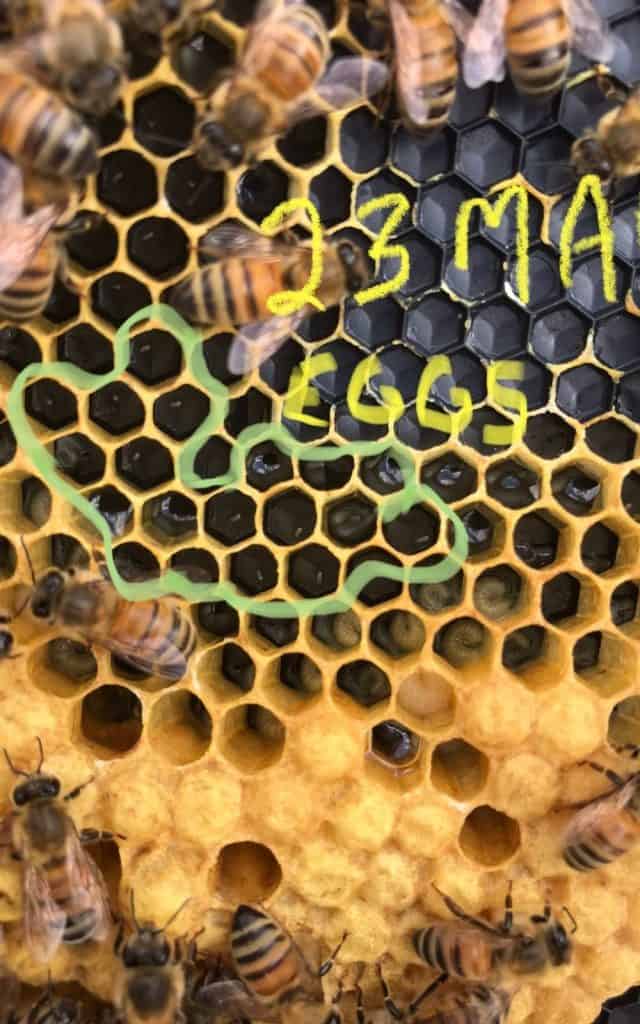
Some nurse bees will attend to the needs of the queen. She is groomed, fed, protected, and even has her waste removed by the nurse bees who care for her. This allows her to be focused on her most important job, laying eggs.
Hive Maintenance and Wax Production
At about 12 to 18 days old, bees develop wax glands. The liquid wax is secreted from their bodies and hardens into flakes. At peak production, worker bees can produce about 8 scales of wax in 12 hours. It takes a thousand wax scales to create a single gram of beeswax! This wax is used to build and repair the honeycomb. It’s used to cap brood cells in their final stage of development.
Bees at this age carry in the groceries! While foragers do the work of bringing the pollen and nectar to the hive, the house bees gather the resources from foragers and store them appropriately. Nectar is gathered in a bee’s honey stomach and transferred from bee to bee. The enzymes produced in their honey stomach begin the transformation of nectar into honey. Once the nectar is ready, it’s placed into the honeycomb where the bees dry the honey by fanning it to the perfect moisture content. When the honey is ready to be preserved, the bees cap it with wax. This will perfectly preserve the honey until it’s needed.
House bees have several other duties within the walls of the beehive. They help regulate the temperature within the hive by fanning their wings. As well as remove sick or dead bees from the hive. While some of the bees’ duties, such as wax production, are very specifically based on their age and physical abilities, some of the bees’ duties are flexible so that bees can adjust their tasks where they are most needed.
Duties Outside the Safety of the Hive
At about three weeks of age, honeybees begin to take on more dangerous roles outside of the hive.
Guard Bees
If you have ever been stung by a bee when you innocently passed by a hive hidden within a tree, a guard bee was likely the culprit. Depending on the size of the hive’s entrance, there may be 10 to 20 bees on guard duty. Their job is to watch for any outside threats to the colony. This includes other bees or wasps that may be trying to rob the colony of their precious resources.
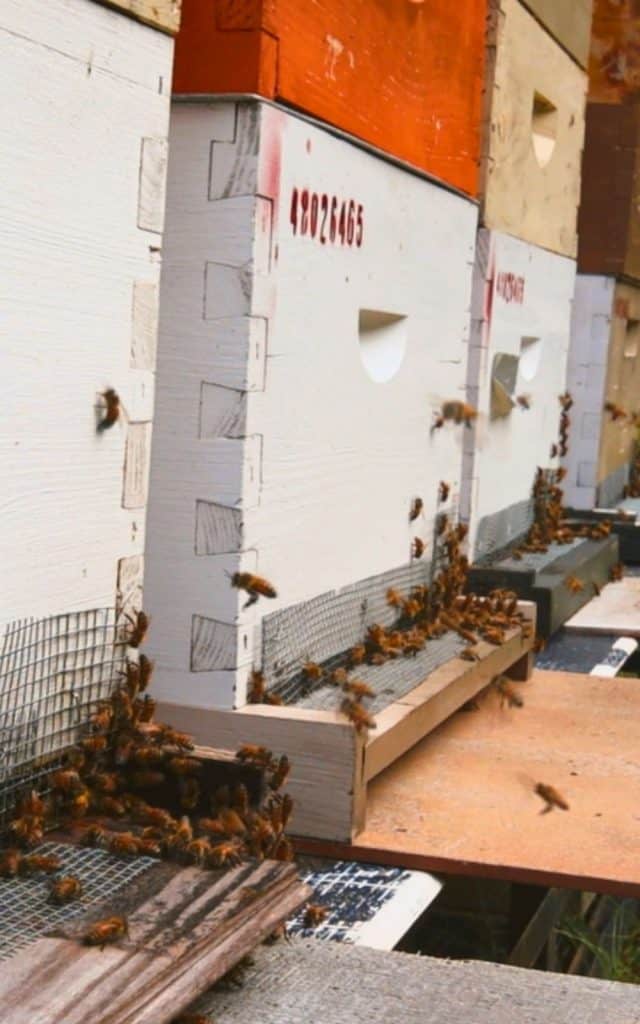
Bees at this age have more developed stingers and venom that allow them to really pack a punch! Should the guard bees become overwhelmed by intruders, they use alarm pheromones to call in reinforcements. As a beekeeper, you can hear when the bees begin to get overwhelmed. Beekeepers use smoke to disrupt the alarm pheromones from being sensed by the other bees. Since the bees can’t sense the danger, they continue at the task at hand, allowing beekeepers to work within the apiary undisturbed.
Foragers and Scout Bees
As a worker bee reaches mid-life, around three weeks old, she takes on the most dangerous duties she’s ever faced. Worker bees spend the remaining portion of their lives as foragers. Honeybees leave the colony to search for and collect nectar, pollen, propolis, and water. Outside the safety of the hive, she faces predators such as dragonflies, birds, inclement weather, and toxins from the chemicals we spray on our lawns and gardens. While honeybees will look for these resources as close to home as possible, they may have to travel as much as 3 to 5 miles from their hive to locate the resources needed.
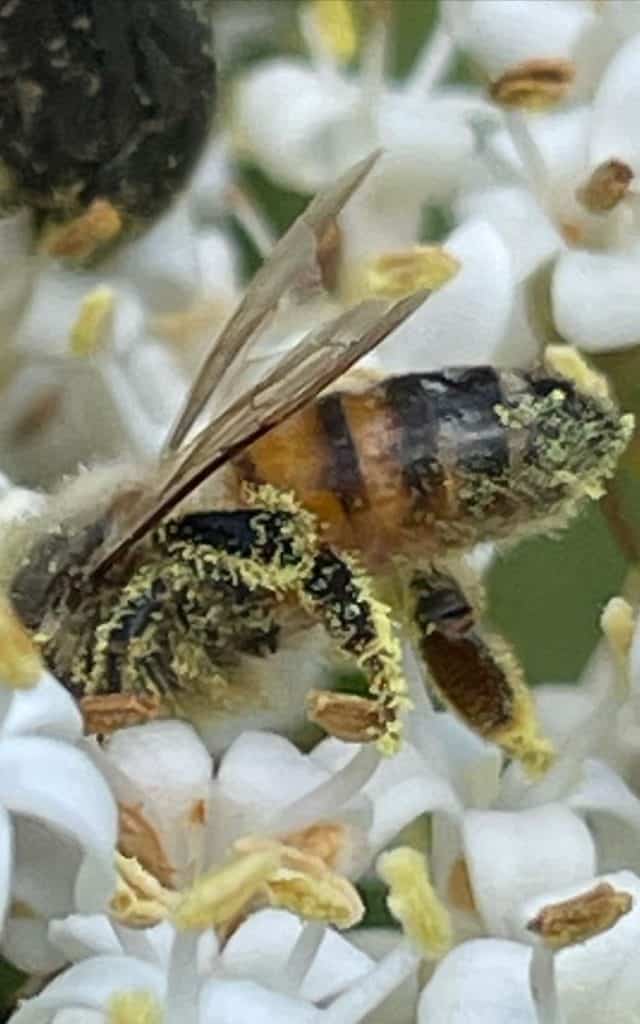
If a honeybee colony is preparing to swarm or feels threatened at its current hive location, experienced foragers work as scout bees to locate a suitable home for the colony. Once a suitable home is located, a portion of the colony may swarm with the queen, or in dire circumstances, the entire colony will abscond.
Incredible Symphony of Order
If you have ever peeked inside a beehive, the statement busy little bee comes to life! While it may appear to be chaotic, the colony is focused on a single goal: survival. The organization and roles of the bees in the hive contribute to an undivided team effort that is truly awe-inspiring! Whether you are a homesteader or backyard gardener looking to pollinate your gardens, or a bit of a science nerd like me, understanding the roles of bees in a hive deepens our appreciation for these tiny creatures. Their dedication and unity are a powerful reminder of what even the smallest can accomplish when they work together!

About the Author: Barbra-Sue Kowalski grew up on a small hobby farm. She was always drawn to farm life, however, she was stuck in an urban life far from her roots. Barbra-Sue was a single mom for 13 years, raising her 3 children on her own. She met Philip in 2018 and they married in 2021. Between the two of them, they have 5 grown children and 6 grandchildren. These empty nesters are following their dreams! As they both turn 50, they are building their off-grid homestead to live the life that they dream about. Learn more about Philip and Barbra-Sue here. Contact them here. To leave a comment on this post, please scroll down.

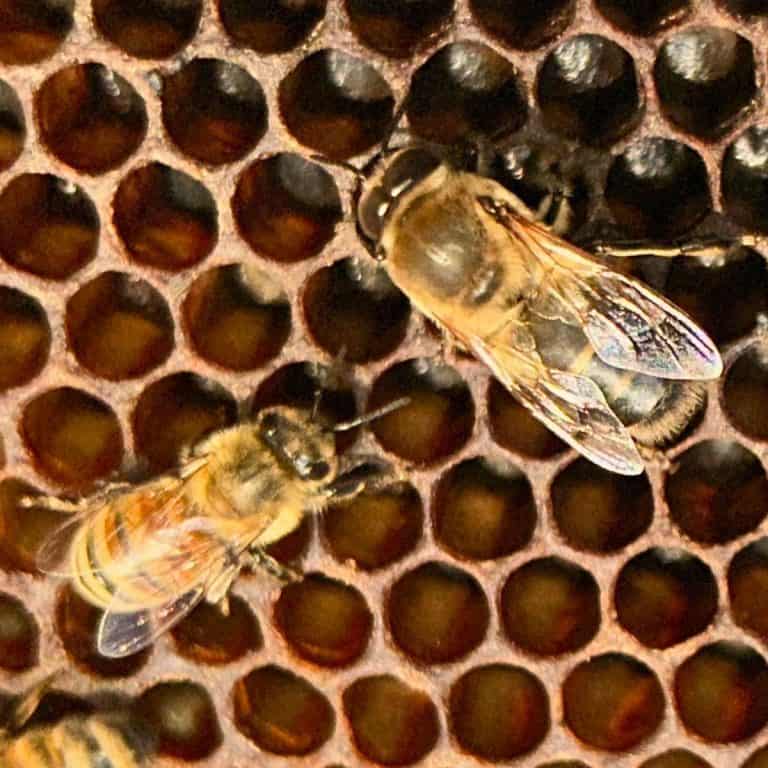



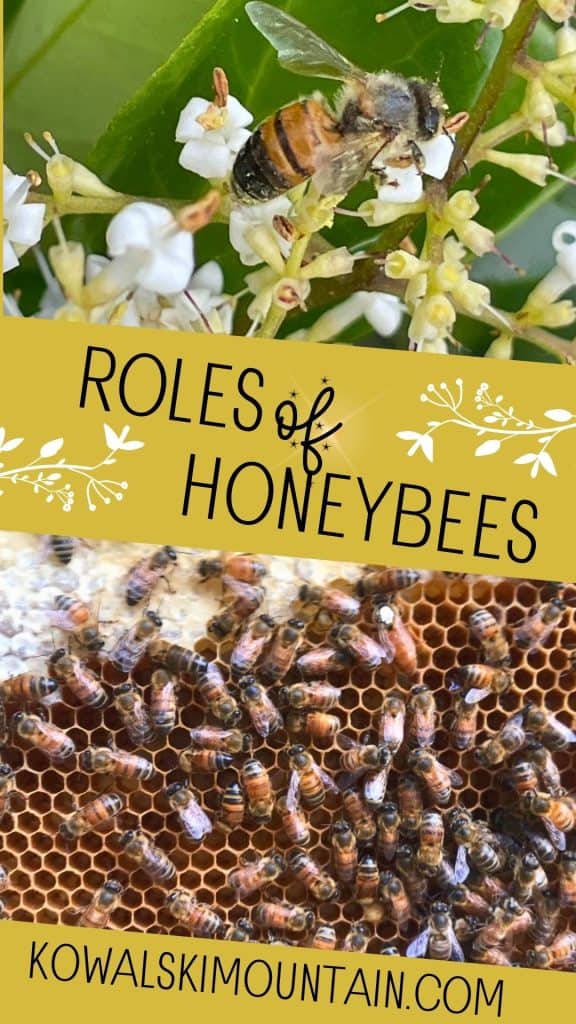





One Comment